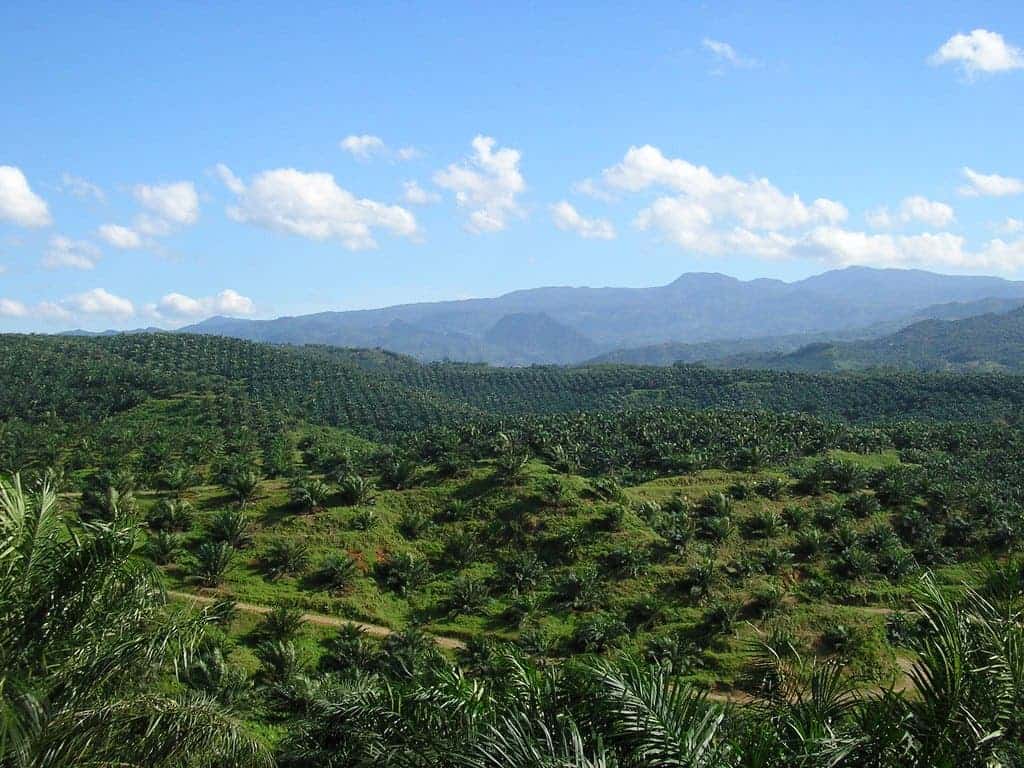
Tropical peatlands in Southeast Asia are massive underground carbon sinks, while peat swamp forests have unique and currently threatened biodiversity. Conserving these two environments and restoring them is an important part of our climate change efforts as well as our efforts to preserve unique ecosystems. However, vast amounts of peat forests have been cleared and peatlands drained for cultivation, resulting in a combo of carbon emissions, biodiversity losses, and land subsidence.
Now, a new study has found a possible way forward. Researchers investigated tropical peatland restoration efforts in Indonesia and found that draining peatlands for cultivation was affecting the viability of oil palm as well as bird species diversity. Instead, restoring natural water flow (a process called “re-wetting”) can conserve both biodiversity and the livelihoods of farmers.
“Tropical peatlands in Indonesia have been drained to allow farmer access and improve farm yields, but we found no trade-offs between drainage depth, yields, and bird diversity on smallholder oil palm farms,” the authors of the new study explain. “Current restoration initiatives to re-wet peat may benefit farmers by reducing fire risk.”
Peatlands and fires
This study was part of a wider project looking at the restoration of tropical peatlands in Indonesia, led by researchers at the University of York at the Indonesian Center for Agricultural Land Resources Research and Development (ICALRRD). This work was initiated in response to the fires and pollution crisis that affected Indonesia and the wider region in 2015, leading to peatland restoration efforts in the country.
“In our research project, we aimed to assess how peat restoration efforts that were focused on raising water levels in drained peatlands had affected the livelihoods of people farming peatlands, and also the biodiversity of peatland habitats, whether on farms or in the remaining natural peatland habitat,” Eleanor Warren-Thomas, the study lead author, told ZME Science.
Indonesia has almost 50% of the global tropical peatlands, mainly on the islands of Borneo and Sumatra. Forests covered 76% of Sumatra’s peatland in 1990, but by 2015 66% was covered by plantations, primarily of oil palm. Drainage is considered necessary to maintain oil palm yields, because long flooding reduces fruit production as roots can’t respire under prolonged inundation.
However, peatland drainage means Sumatra is currently a hotspot for peat fires, and farming practices have caused more fires in the area. Peatland restoration activities are now underway, mostly focused on re-wetting cultivated areas by blocking drainage canals to reduce the risk of fires, driven by the establishment of new requirements. Law mandates average water table depths of -40cms in cultivated peatlands.
Warren-Thomas and the team of researchers surveyed smallholder oil palm farms in Jambi province, Sumatra, hoping to find out whether the water levels on the farms (the water table in the peatland soil, below the ground) had an effect on the yield of oil palm on the farms, on the vegetation growing between the oil palms on the farms, and then in turn, the birds living on those farms.
Overall, the study showed that there was no apparent difference in oil palm yields within the range of water table depth across the studied farms (from -3cm to -50cm below the ground). Water levels also didn’t seem to affect vegetation much, nor birds living on the farms, meaning having higher water levels should reduce the risk of peat fires without having a negative impact on yields.
The researchers also found that the remaining peat swamp forest area next door to the farms contained over ninety species of birds of almost completely different species to those found living on the oil palm farms (where they found 48 species). This means that that forest is important for the conservation of birds, and other wildlife living in the landscape. So in other words, re-wetting peatlands would help local ecosystems at no cost to the farmers.
“We also know that in the longer term, cultivation on peatlands just might not be possible, as due to the drainage the peat is actually decomposing and slowly subsiding downwards towards the permanent water table and the clay beneath the peat. Once this happens, the land would be completely flooded and it wouldn’t be possible to farm it,” Warren-Thomas told ZME Science.
Despite these findings, the researchers acknowledge the big challenges ahead. People have strong economic interests tied up in cultivating peatlands, and currently, this is mostly drainage-dependent. There are crops that can be grown on fully re-wetted peatlands, such as jelutong, but currently, there’s no big market for it. Changing this might require strong financial incentives, the researchers conclude.
The study was published in the Journal of Applied Ecology.



